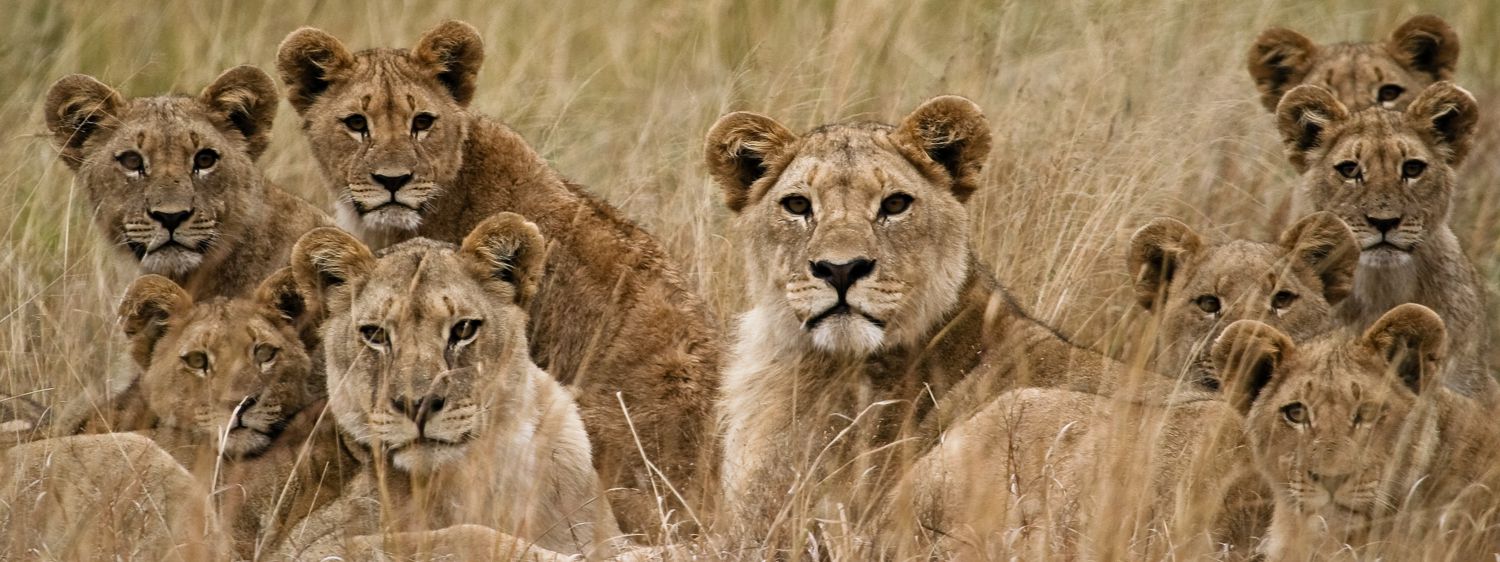The lion (Panthera leo) is one of the most iconic and majestic animals in the world, often referred to as the "King of the Jungle"—though it actually thrives in open grasslands and savannahs rather than dense forests. With its muscular build, golden coat, and the male’s impressive mane, the lion is a symbol of strength, courage, and nobility.
Physical Characteristics
Adult male lions typically weigh between 150 and 250 kg, while females are slightly smaller, ranging from 100 to 180 kg. Males are easily recognized by their thick manes, which vary in color from blond to black and serve as a sign of maturity and dominance. Lions have powerful jaws, sharp retractable claws, and keen eyesight, making them formidable predators.
Behaviour and Social Structure
Lions are unique among big cats for their social nature. They live in groups called prides, which usually consist of related females, their cubs, and a coalition of males. This social structure allows them to hunt cooperatively and protect their territory more effectively. While lionesses do most of the hunting—often working together to stalk and ambush prey—males play a crucial role in defending the pride from intruders.
Lions are also known for their vocalizations, especially their deep, resonant roar, which can be heard up to 8 kilometers away. Roaring helps them communicate with pride members and warn off rivals.
Habitat and Distribution
Lions are primarily found in sub-Saharan Africa, with the largest populations in countries like Tanzania, Kenya, Botswana, Namibia, and South Africa. They prefer savannahs, grasslands, and open woodlands where prey is abundant and cover is available for stalking. A small, critically endangered population of Asiatic lions also survives in the Gir Forest of India.
Conservation Status
Once widespread across Africa, the Middle East, and parts of Asia, lions have seen a dramatic decline in numbers due to habitat loss, human-wildlife conflict, and poaching. Today, they are classified as "Vulnerable" by the IUCN, with some regional populations considered endangered. Conservation efforts, including protected reserves and community-based tourism, are vital to ensuring their survival.



